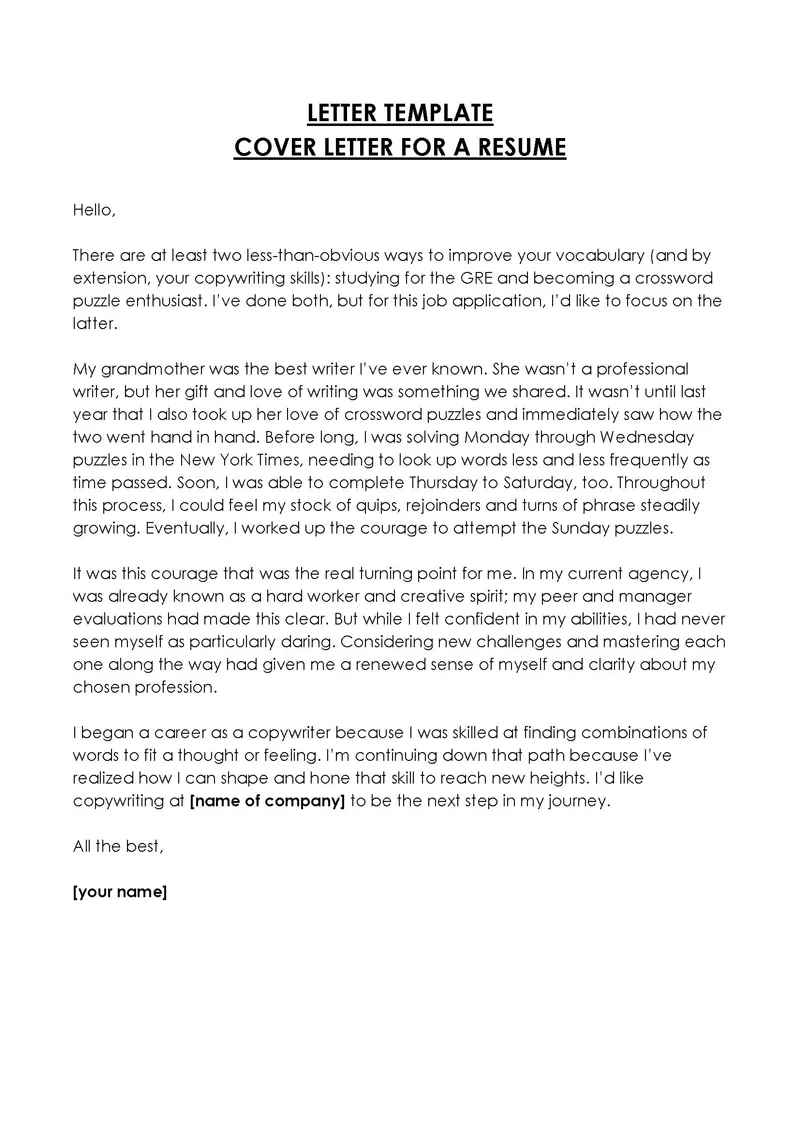Cover Letter Basics Understanding the Purpose
A cover letter is a crucial document that accompanies your resume when applying for a job. It serves as an introduction, allowing you to express your interest in the position and highlight your qualifications. Unlike a resume, which provides a factual overview of your experience, a cover letter gives you the opportunity to explain why you are the perfect fit for the role and the company. It’s a chance to showcase your personality, enthusiasm, and writing skills. By understanding the purpose of a cover letter, you can craft one that grabs the attention of potential employers and increases your chances of getting an interview. A well-written cover letter can set you apart from other applicants and make a positive first impression. Remember, the primary goal of a cover letter is to persuade the hiring manager to read your resume and consider you for the job.
Why Cover Letters Are Important
Cover letters are important because they provide a space to express your personality and interest in a job. They allow you to expand on the information presented in your resume and explain how your skills and experience align with the specific requirements of the position. Many employers view cover letters as a mandatory part of the application process, using them to assess a candidate’s writing skills, attention to detail, and overall fit for the company culture. Without a cover letter, your application might be overlooked, even if your resume is strong. It’s an opportunity to explain any gaps in your employment history or address specific concerns the employer might have. A well-written cover letter can significantly increase your chances of securing an interview, demonstrating your genuine interest and providing a clear understanding of your value proposition.
Key Components of a Cover Letter
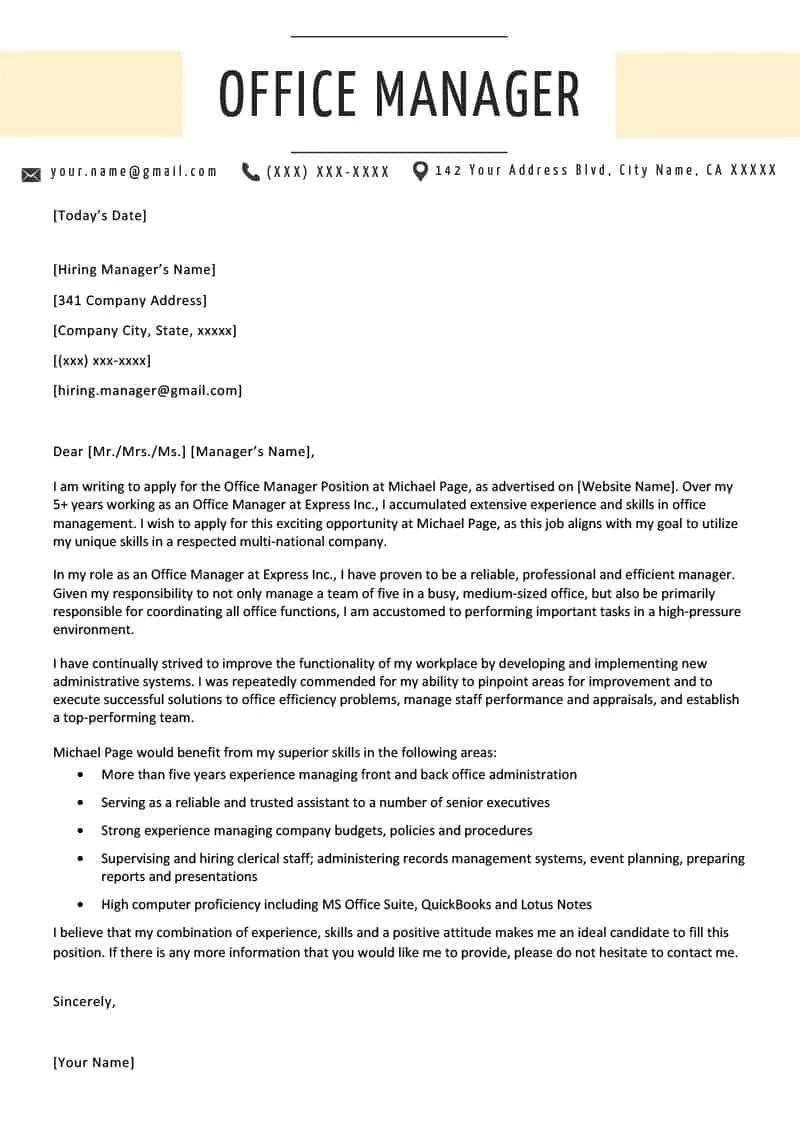
A standard cover letter typically consists of several key components. These elements work together to create a cohesive and persuasive document. First, you’ll need a header with your contact information. Following the header is the salutation, where you address the hiring manager. The opening paragraph should immediately grab the reader’s attention and state the position you are applying for. The body of the letter then highlights your relevant skills and experience, providing specific examples. The closing paragraph reiterates your interest, expresses gratitude, and includes a call to action. Finally, you should always proofread and edit your cover letter before submitting it. Each section plays a critical role in conveying your qualifications and enthusiasm.
The Header Your Contact Information
Your cover letter header should include your contact information. This typically involves your full name, address, phone number, and email address. Ensure that the information is accurate and up-to-date. You should also include the date and the employer’s contact information, if available. This makes it easy for the employer to reach you if they are interested in your application. Presenting your contact details clearly and professionally reflects your attention to detail and professionalism, establishing a positive first impression. Be sure to use a professional-sounding email address; avoid nicknames or casual handles. Make sure to use a font and formatting that aligns with your resume.
Formatting the Header
Properly formatting your cover letter header enhances readability and ensures a professional appearance. Your name and contact information should typically be aligned to the left or center, while the date can be placed on the left or right side. Ensure consistent spacing and font choices throughout the header and the rest of your letter. Avoid using overly creative fonts or designs that might distract from your message. Keep it clean and simple. Make sure the header is easy to scan and contains all the necessary details without being cluttered. This helps recruiters and hiring managers quickly find your contact details. A well-formatted header sets the tone for the entire document, indicating attention to detail and professionalism.
The Salutation Addressing the Recipient
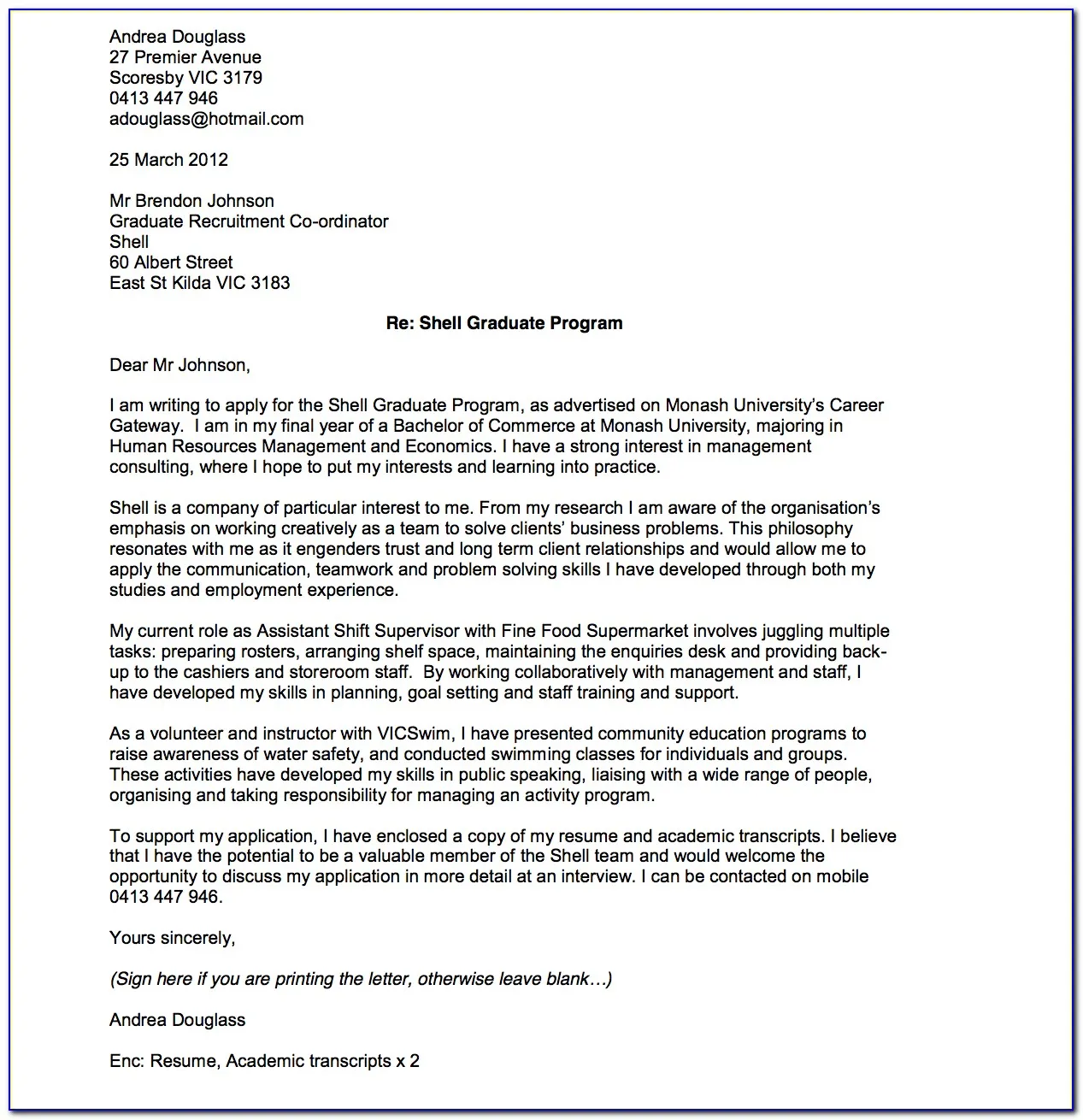
The salutation is your greeting at the beginning of the cover letter, and it sets the tone for your communication. Start with a professional greeting, such as “Dear Mr./Ms./Mx. [Last Name]”. If you do not know the hiring manager’s name, it’s acceptable to use a general salutation like “Dear Hiring Manager.” Avoid generic greetings such as “To Whom It May Concern.” If the job posting provides a contact person, make sure you address them by name. Addressing the recipient by name shows that you’ve done your research and are genuinely interested in the role. Using a proper salutation creates a more personalized and professional impression. It shows respect and attention to detail, both important qualities that employers look for.
Finding the Right Contact Person
Making an effort to find the right contact person can significantly improve your chances of getting noticed. Check the job posting carefully for the name and title of the hiring manager or the person to whom you should address your application. If this information isn’t available, you can research the company on LinkedIn or the company website to find the appropriate contact person. If you still can’t find a specific name, you can use a general title like “Hiring Manager” or “Recruiting Team.” Addressing your cover letter to a specific person, rather than a general title, shows that you have taken the initiative to learn more about the company and the role, which demonstrates your genuine interest. It also helps personalize your application and increases the likelihood that it will be read by someone directly involved in the hiring process.
Crafting a Compelling Opening
The opening paragraph of your cover letter is crucial, as it sets the tone and encourages the reader to continue. Start by clearly stating the position you are applying for and how you found the job opening. Then, immediately grab the reader’s attention by highlighting something specific about the company or the role that excites you. Show your enthusiasm and your understanding of the company’s values or the specific requirements of the job. Avoid generic opening lines. Be specific about why you are interested in the company and the position. Tailor your opening to reflect your research of the company and the unique opportunity presented. A strong opening paragraph will capture the reader’s interest and make them want to learn more about your qualifications.
Showcase Your Enthusiasm
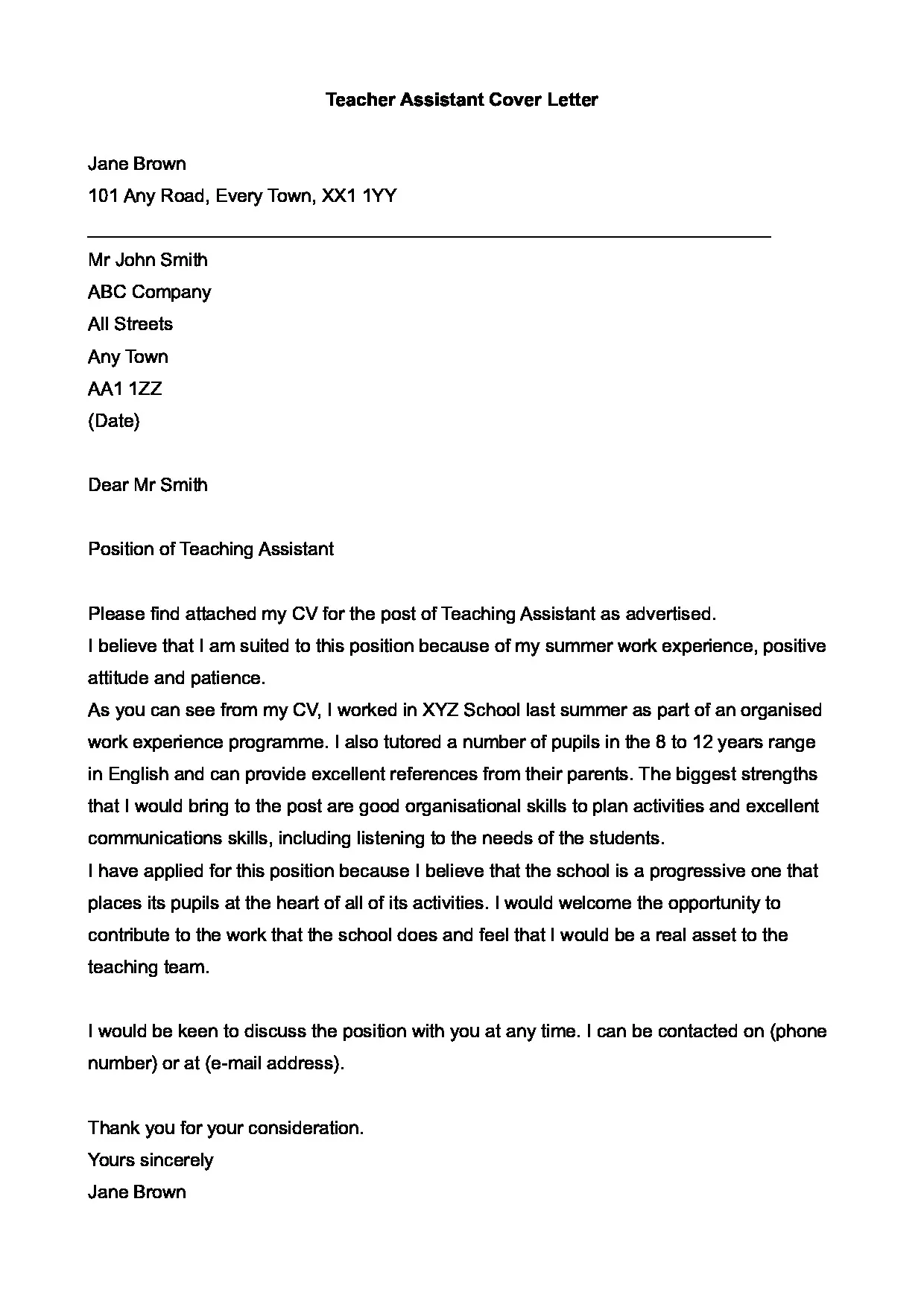
Demonstrate your enthusiasm for the position and the company in your opening paragraph. Instead of simply stating that you are interested, explain why. Mention something specific that attracted you to the job or the company. It could be the company’s mission, its reputation, its products or services, or a specific aspect of the role that aligns with your career goals. Show that you have done your research and are genuinely interested in contributing to the company’s success. Using enthusiastic language and sharing your excitement can make a positive impression. This helps you stand out from the crowd and shows that you are eager to join the team. Your genuine excitement and motivation can be a significant factor in getting an interview.
Highlight Relevant Skills and Experience
The body of your cover letter should provide specific examples of how your skills and experience match the job requirements. Do not simply repeat your resume. Instead, select a few key accomplishments and describe them in more detail. Use action verbs to show what you did, and quantify your achievements whenever possible by providing numbers, percentages, or other metrics to demonstrate your impact. Tailor your examples to the specific job description, focusing on the skills and experiences that the employer has highlighted. This demonstrates how you can contribute to their team. The body of your letter is where you provide the compelling evidence that you are a strong candidate. By aligning your experiences with their needs, you make it clear that you are the best choice for the job.
Tailoring Your Letter to the Job
Customizing your cover letter for each job application is very important. Review the job description carefully to identify the key skills, qualifications, and experiences the employer is seeking. Use these requirements as a guide to select which accomplishments to highlight and what specific skills to emphasize. Change your letter accordingly. Avoid using a generic cover letter. If you’re applying for multiple positions, make sure you tailor your letter each time. By tailoring your letter, you demonstrate your interest in the specific job and your understanding of the company’s needs. This level of personalization is more likely to capture the hiring manager’s attention and make a positive impression. Tailoring ensures that your cover letter is directly relevant to the role.
Matching Skills to Requirements
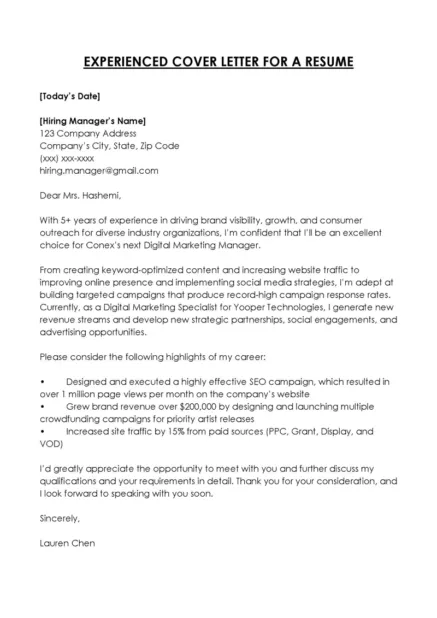
Carefully match your skills and experiences to the requirements outlined in the job description. The hiring manager is looking for specific skills and abilities that align with the role. When you are writing your cover letter, highlight the skills that the employer is seeking, and provide examples of how you’ve used those skills in the past. Use keywords from the job description to show that you understand the position and its requirements. For instance, if the job description emphasizes project management experience, provide specific examples of projects you’ve managed and the results you achieved. The more directly you can demonstrate that you meet the job’s criteria, the more likely you are to be selected for an interview.
Quantifying Your Achievements
Whenever possible, quantify your achievements to provide a clear picture of your impact. Use numbers, percentages, or specific metrics to illustrate your accomplishments. Instead of stating that you improved sales, state that you increased sales by 15% in one quarter. Rather than saying you managed a team, say that you led a team of 10 employees, resulting in a 20% increase in productivity. Quantifying your achievements makes your claims more credible and gives the hiring manager a clear understanding of your value. It provides tangible evidence of your abilities and showcases your ability to deliver results. It also makes your cover letter more compelling. By providing concrete examples, you make your qualifications more memorable and impactful.
Using Action Verbs
Use action verbs to describe your accomplishments and responsibilities. Action verbs create a sense of momentum and highlight your contributions. Start each bullet point or sentence with a strong action verb that clearly conveys your role and the impact of your actions. Examples of effective action verbs include “managed”, “developed”, “implemented”, “increased”, “led”, “created”, “organized”, “achieved,” and “improved.” By using action verbs, you show that you are a proactive and results-oriented candidate. Avoid using passive language, which can make your writing seem less impactful. Action verbs transform your descriptions from static statements to dynamic portrayals of your capabilities. A well-crafted cover letter with action verbs will make your achievements more persuasive.
Writing a Strong Closing
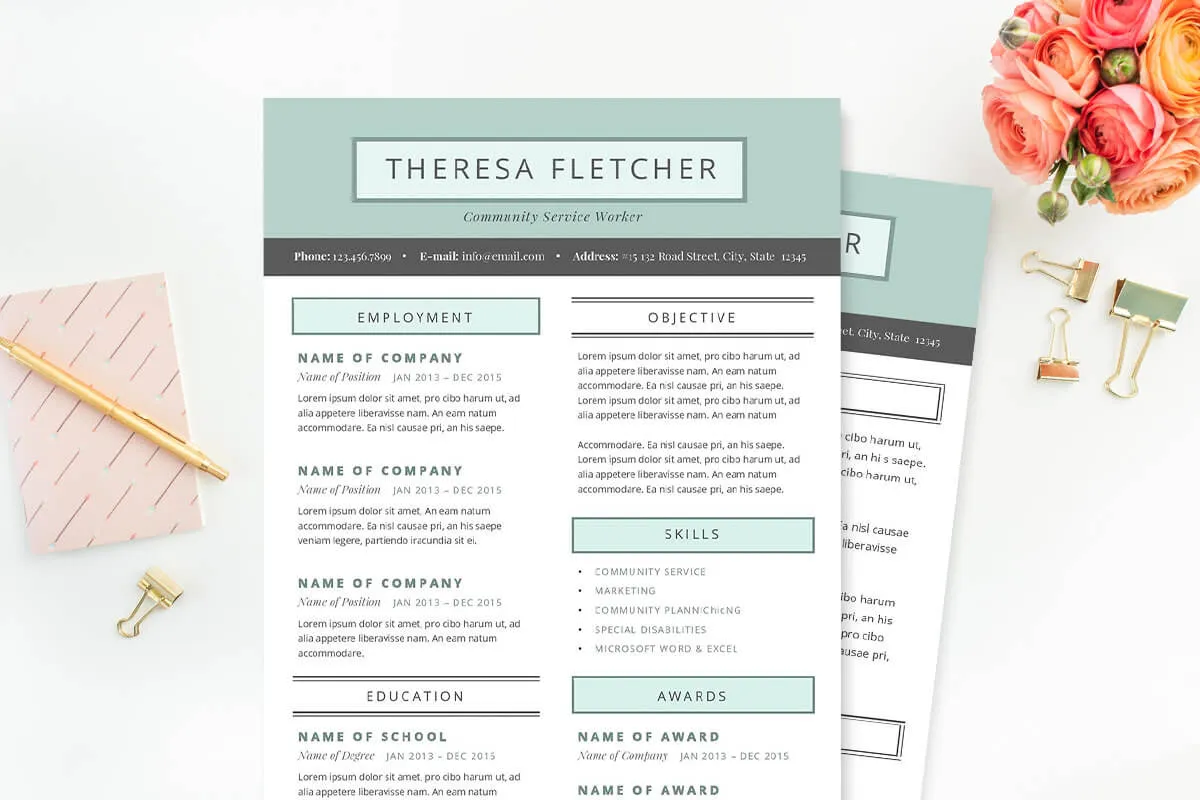
Your closing paragraph should restate your interest in the position, express gratitude for the reader’s time and consideration, and include a clear call to action. Reiterate your enthusiasm and why you are a good fit for the role. Thank the hiring manager for their time and consideration of your application. End with a clear call to action, such as inviting them to contact you for an interview or expressing your eagerness to discuss your qualifications further. This is your last chance to make an impression. Make sure it is positive and reinforces your interest. A strong closing paragraph provides closure and leaves the reader with a positive impression. It also makes it easy for the employer to take the next step.
Expressing Gratitude
Expressing gratitude is a polite and professional way to end your cover letter. Thank the hiring manager for taking the time to review your application and consider you for the position. Show that you value their time and attention, as it is an important gesture that conveys respect and professionalism. You can say something like, “Thank you for your time and consideration” or “I appreciate you taking the time to review my application.” This not only shows your good manners, but also reinforces your respect for the hiring process and the employer. Even if you are not selected for the job, expressing gratitude leaves a positive impression, which can be beneficial for future opportunities.
Call to Action
A clear call to action prompts the reader to take the next step, making it easy for them to respond to your application. Make it easy for them to contact you. Your call to action can be as simple as “I am eager to discuss my qualifications further” or “I look forward to hearing from you soon.” You can also include your phone number and email address to make it easier for them to reach you. This directs the hiring manager to take a specific action and move forward with your application. It is a way to take control of the process and express your enthusiasm for the opportunity. Include your contact details, making it convenient for them to schedule an interview.
Proofreading and Editing
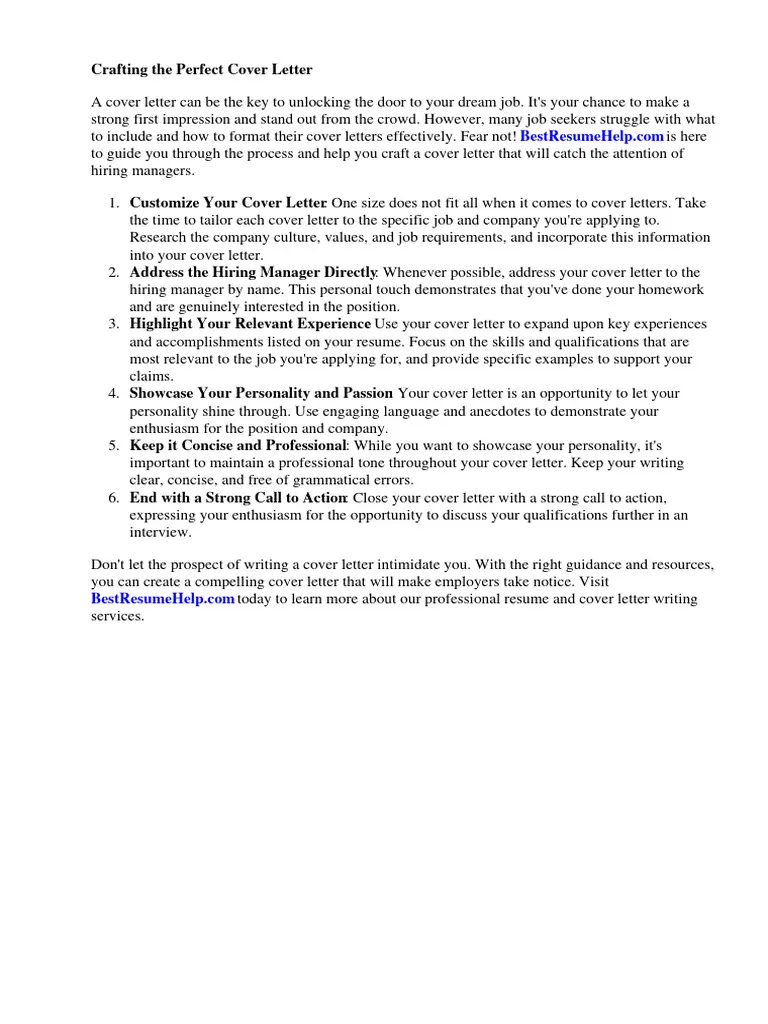
Proofreading and editing your cover letter is an essential step. Errors in grammar, spelling, and formatting can damage your credibility and create a negative impression. Carefully read through your letter, checking for any mistakes. It’s also helpful to have someone else proofread your cover letter. A fresh pair of eyes may catch errors that you might have missed. Make sure you use a spell checker and grammar checker to help identify errors, but do not rely solely on them. Proofreading helps ensure that your cover letter is polished and professional, which is the most important thing. Reviewing and editing your cover letter demonstrates your attention to detail and commitment to quality. This also sets you apart from other candidates.
Checking for Grammar and Spelling Errors
Checking for grammar and spelling errors is a crucial part of the proofreading process. Use grammar and spell-checking tools to identify potential mistakes. However, don’t completely rely on these tools. Read your cover letter carefully, looking for any grammatical errors or misspelled words. Make sure the words are used correctly, and the sentences are well-structured. Proofread multiple times, as it’s easy to miss errors on the first pass. Small errors can detract from your overall message and make you seem less professional. Taking the time to ensure your cover letter is free of errors demonstrates your attention to detail and increases the impact of your writing. This also shows you value professionalism.
Formatting and Readability
Formatting and readability are essential for a cover letter. Use a clean, easy-to-read font, such as Times New Roman or Arial, in a standard size (11 or 12 points). Maintain consistent spacing and margins throughout your letter. Avoid using large blocks of text; break up paragraphs to improve readability. Use clear headings and subheadings to guide the reader. A well-formatted cover letter is easier to read, which increases the likelihood that the hiring manager will pay attention to your message. This includes proper spacing and alignment, which enhances the overall look of your letter. Ensure the layout of your cover letter is visually appealing and easy to navigate.
Cover Letter Examples
Reviewing cover letter examples can provide valuable insights into structure and content. Look for examples that match your industry and the types of jobs you’re applying for. Pay attention to how the cover letter is structured, including the opening, body paragraphs, and closing. Study how the writers highlight their skills and experience and how they tailor their letters to the specific job requirements. Analyze the language and tone of the examples. Note the use of action verbs, and how they quantify their achievements. Using cover letter examples as guides helps you understand what a successful cover letter looks like. This will allow you to create your own. However, avoid copying. Instead, use the examples to inform and inspire your own writing.
Cover Letter Template
A cover letter template offers a starting point to help you create your own personalized cover letter. Use a template as a guide, but remember to customize it to fit your unique qualifications and the specific job. A cover letter template provides a framework that helps you include all the essential components of a cover letter, such as your contact information, salutation, opening paragraph, body paragraphs, closing, and signature. Start with a template and then personalize it. This allows you to focus on tailoring the content of your letter to the specific job requirements and your own experiences. Do your research, and create a cover letter that accurately reflects your skills and experience. A well-designed template will save you time and help you create a professional-looking cover letter.
